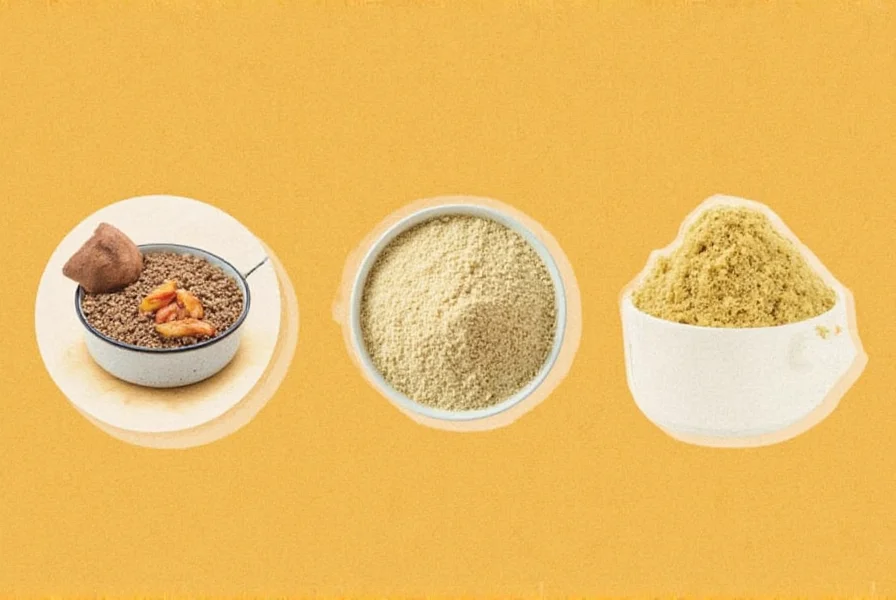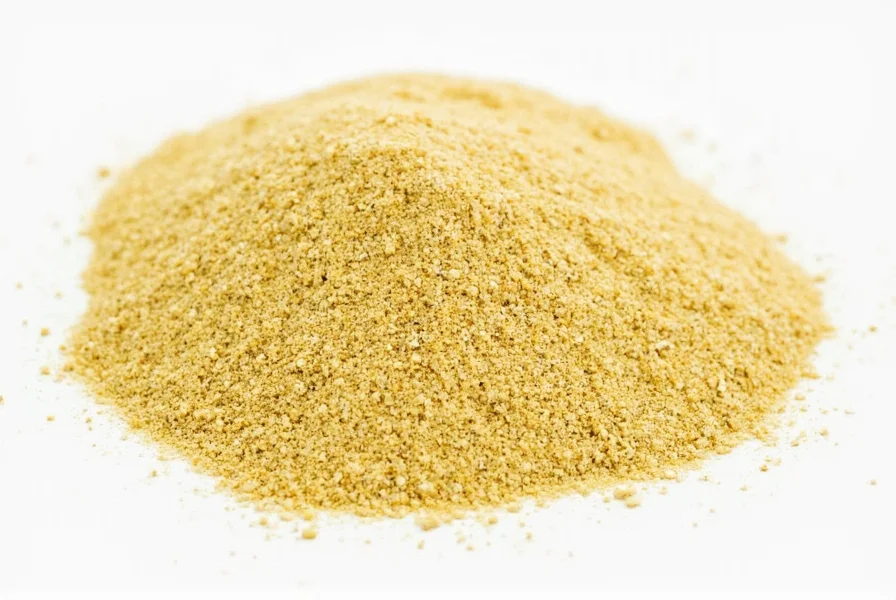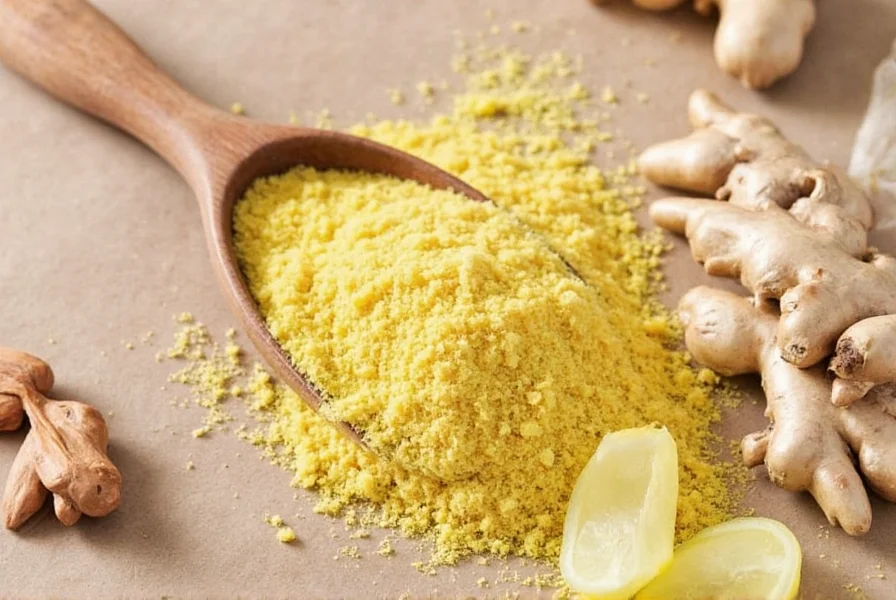Running out of ground ginger mid-recipe can derail your cooking plans. Whether you're baking cookies, preparing curry, or mixing cocktails, knowing reliable alternatives ensures your dish still achieves that distinctive ginger flavor profile. This guide provides practical, tested substitutions that maintain recipe integrity while accommodating different dietary needs and flavor preferences.
Top Ground Ginger Substitutes Ranked by Effectiveness
When selecting a ground ginger replacement, consider your recipe type and desired flavor intensity. Ginger contributes both warmth and subtle spiciness to dishes, so the best substitute depends on whether you're making sweet or savory preparations.
1. Fresh Ginger (Best Overall Substitute)
Fresh ginger root provides the most authentic flavor profile. It contains gingerol, the compound responsible for ginger's characteristic heat, which partially converts to zingerone during cooking for a mellower flavor.
Conversion ratio: 1/4 teaspoon ground ginger = 1 tablespoon freshly grated ginger. For recipes requiring extended cooking, use slightly less fresh ginger as its flavor intensifies with heat.

2. Allspice (Best for Baking)
Allspice combines notes of cinnamon, nutmeg, and cloves, making it an excellent 1:1 replacement in baked goods where ginger's warmth matters more than its sharp bite. This is the best substitute for ground ginger in baking applications like gingerbread or spice cakes.
Use equal parts allspice for ground ginger in cookie recipes, but reduce by 25% in delicate pastries to prevent overpowering other flavors. Allspice lacks ginger's slight heat, so add a pinch of black pepper to mimic this dimension in savory applications.
3. Cinnamon-Cardamom Blend (Best Non-Spicy Alternative)
For those seeking a ground ginger replacement without the heat, combine 3 parts cinnamon with 1 part cardamom. This blend captures ginger's warmth while eliminating its characteristic bite, making it ideal for children's recipes or sensitive palates.
This cinnamon cardamom substitute works particularly well in apple pies, oatmeal cookies, and chai tea recipes where ginger's warmth enhances but shouldn't dominate.
Specialized Substitutes for Specific Applications
| Substitute | Best For | Ratio | Flavor Notes |
|---|---|---|---|
| Ginger paste | Savory sauces, marinades | 1:1 | More intense, add gradually |
| Galangal | Thai curries, soups | 1:1 | Sharper, more floral than ginger |
| Pumpkin pie spice | Baking, fall recipes | 1:1 | Sweeter, less spicy profile |
| Ginger extract | Small-batch baking | 1/8 tsp extract = 1/4 tsp ground | Concentrated flavor, use sparingly |
Ginger Paste for Intense Flavor Applications
Ginger paste offers concentrated flavor ideal for curries and marinades. Use equal parts paste to ground ginger, but add gradually as its flavor intensifies during cooking. This ground ginger replacement works particularly well in Indian and Southeast Asian cuisine where fresh ginger flavor is essential.
Galangal for Authentic Thai and Indonesian Dishes
While not a perfect substitute, galangal provides the closest approximation in Southeast Asian recipes. Its sharper, more floral profile works well in tom yum soup and certain curry pastes. Use equal parts galangal to ground ginger, but note it won't provide the same level of heat.
Critical Considerations When Substituting
Successful substitution requires understanding how each alternative affects your final dish. These factors determine which ground ginger replacement will work best for your specific recipe:
Recipe Type Matters Most
Baking: Pumpkin pie spice or allspice work best as ground ginger alternatives in cookies, cakes, and breads. The warm notes complement sweet ingredients without overwhelming them.
Savory dishes: Fresh ginger or galangal provide the necessary complexity for stir-fries, curries, and marinades. Avoid sweet spice blends in these applications.
Beverages: Ginger extract or a small amount of fresh ginger steeped in hot liquids creates the perfect ginger substitute for teas, cocktails, and mulled wines.
Flavor Balance Adjustments
When using a ground ginger replacement, consider these adjustments to maintain flavor balance:
- Reduce other spices by 10-15% when using allspice or pumpkin pie spice
- Add 1/8 teaspoon acid (lemon juice or vinegar) to mimic ginger's bright note
- Include a pinch of black pepper to replicate ginger's subtle heat
- For baking, increase sweetener slightly when using cinnamon-cardamom blend
Dietary and Allergy Considerations
For those with ginger allergies or sensitivities, mace provides a similar warm profile without related allergens. Use 3/4 teaspoon mace for every 1 teaspoon ground ginger. This ginger powder alternative works particularly well in custards and creamy sauces where strong flavors might overwhelm delicate ingredients.

When Substitution Isn't Recommended
Some recipes rely on ginger's unique chemical properties that substitutes can't replicate. Avoid replacing ground ginger in:
- Fermented foods like kimchi where ginger aids the process
- Medicinal preparations relying on specific ginger compounds
- Recipes specifically designed around ginger's distinctive flavor profile
- Certain baking applications where ginger's acidity affects texture
In these cases, consider modifying your recipe rather than substituting. For example, replace ginger snaps with oatmeal raisin cookies instead of trying to mimic the ginger flavor.











 浙公网安备
33010002000092号
浙公网安备
33010002000092号 浙B2-20120091-4
浙B2-20120091-4